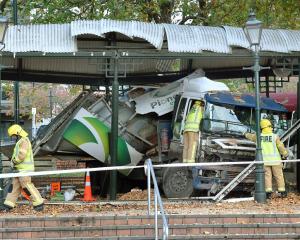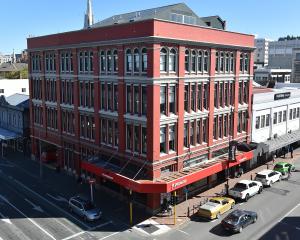But the importance of work on land behind the beach was also highlighted at a Dunedin City Council hearing on the issue yesterday, and there was a strong argument Kettle Park may have to go.
The hearing, before city councillors Paul Hudson, Colin Weatherall and Dave Cull, is a response to investigations into stabilising the city's beaches, which were badly eroded during storms last year.
Sustainable Dunedin City Inc representative Phillip Cole argued the city needed a "managed retreat'', rather than building ever-larger walls.
Mr Cole, an engineer, told the committee three or four different defences had been mounted at the beaches, "each time replaced by a larger structure''.
"If you use a hard solution, you will just have to replace it again with a bigger, deeper wall.''
A managed retreat would allow the shoreline to advance unimpeded, meaning buildings and homes would have to be demolished or moved inland, though Mr Cole said he was talking about a 50 to 100 year timeframe.
"It will be unpopular. It's going to be bloody difficult.''
Mr Cole said the rising sea level would cause problems in southern Dunedin anyway, as the water table rose in reclaimed areas.
The idea of manuka scrub fences to trap sand was popular with some submitters, and Cr Cull said he understood they had been used to help reclaim Logan Park.
But community and recreation services manager Mick Reece said they were more suitable for estuaries than environments like St Clair and Middle beaches, and Cr Hudson said they would not help with waves hitting the toe of the sand dunes, which happened last year.
Doug Hall, of Dunedin company Hall Bros, who co-ordinated the emergency work at the beach last year, suggested rows of rocks at the toe of the dune. Water would still splash up the dune, but most of the sand would stay.
A longer-term response in the United Kingdom was terraced walls made of steel-free concrete blocks that fitted together like Lego.
Cr Hudson asked Mr Hall about timber groynes, and Mr Hall said they were good for catching wind-blown sand, but would not stop sand being dragged out to sea.
Several submitters suggested using Holmberg Technologies, and the company put in its own submission offering "soft shore protection methods''.
Mr Reece said the company had been "aggressive'' in its approaches to the council offering its services.
Cr Weatherall said the company's successes had been more with inland seas than areas like St Clair.
Surfing coach and surfboard maker Peter McLachlan raised the idea of an offshore reef combined with "soft options'' on the beach, rather than options like sea walls, and told the committee of the growing number of surfers in Dunedin.
Cr Weatherall asked him if he knew of reefs working in a such a volatile area, and Mr McLachlan said he did not, but experts would need to be consulted.
Paul Pope, who spent more than 13 years working for the council, gave the committee a history lesson on the area, and said a forward, mid and rear dune structure with vegetation was necessary, rather than "fiddling around'' with a thin strip of dune.
"Kettle Park needs to go to give a sustainable fore-dune.''
He suggested an upgrade of Tahuna Park or developing Forbury Park as a premier venue. The hearing continues today.












